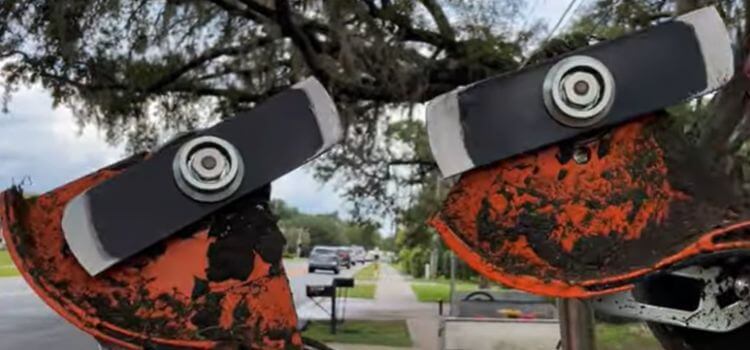As an Amazon Associate, I earn from qualifying purchases.
If you’ve been using your edger for a while, you might have noticed that the blade isn’t cutting as cleanly as it used to. If you’re wondering how to sharpen an edger blade, you’re in the right place! I’ve been there myself, and trust me, it’s much easier than it seems.
Over time, even the best blades can get dull from frequent use, which affects their performance. But with the right tools and techniques, you can bring your blade back to life and improve the quality of your lawn edging.
In this guide, I’ll walk you through simple steps to sharpen your edger blade, ensuring that your tool works like new again. Whether you’re a beginner or have done this before, you’ll find the process easy to follow. Let’s get started so your edger can perform at its best again!
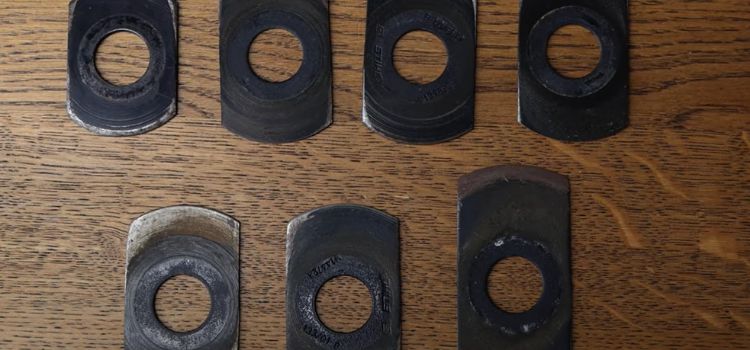
Why Sharpening An Edger Blade Is Important
Edging your lawn gives it a clean, professional look. But if the blade of your edger is dull, you won’t get those sharp, precise lines. That’s why sharpening an edger blade is essential. A sharp knife cuts cleanly and efficiently, making your yard look its best.
Why Does A Sharp Blade Matter?
A sharp blade ensures that your edger performs at its best. When the blade is sharp, it cuts through grass and soil easily, resulting in a cleaner edge and less wear on the machine. A dull blade can tear the grass, leaving ragged edges that look untidy and can damage your lawn.
Benefits Of A Sharp Edger Blade
- Improved Efficiency: A sharp blade requires less cutting power, saving energy.
- Cleaner Cuts: Sharp blades create neat and precise edges.
- Extended Lifespan: Regular sharpening prolongs the life of your edger.
- Healthier Lawn: Clean cuts reduce the risk of disease and pests.
Signs Your Edger Blade Needs Sharpening
It’s easy to tell if your edger blade needs sharpening. Here are a few signs to watch for:
- Ragged Edges: The blade is dull if the grass looks torn or frayed.
- Increased Effort: If you need more effort to edge, the blade might need sharpening.
- Uneven Cuts: A sharp blade cuts evenly; a dull one does not.
How Often Should You Sharpen Your Edger Blade?
How often you should sharpen your edger blade depends on your use. For heavy use, sharpen the sword every 2-3 months. For occasional use, twice a year may suffice. Regular inspection and maintenance keep your edger in top shape.
Tools Required For Sharpening An Edger Blade
Sharpening an edger blade is essential for maintaining clean and precise lawn edges. The process is straightforward, but you need the right tools to do it effectively. Here’s a detailed guide on the tools required for sharpening an edger blade.
Angle Grinder
An angle grinder is a versatile tool that can quickly sharpen an edger blade. It’s ideal for those who need fast and efficient results. Here are the key points to remember when using an angle grinder:
- Powerful and fast: Angle grinders can sharpen blades quickly.
- Portable: Easy to handle and move around.
- Different grinding discs: Use metal grinding discs for best results.
When using an angle grinder, maintain a consistent angle to avoid uneven sharpening. Here’s the pros and cons:
Pros
- Fast sharpening
- Portable
Cons
- Requires steady hands
- Can overheat the blade
Bench Grinder
A bench grinder is a stationary tool that provides stability and precision. It’s perfect for those who have a dedicated workspace. Key features include:
- Stable: Mounted on a bench, offering stability.
- Powerful motor: Makes sharpening quick and efficient.
- Adjustable tool rest: Helps maintain the correct angle.
A bench grinder involves placing the blade on the tool rest and applying gentle pressure. Here’s a quick comparison:
Pros
- Stable and precise
- Powerful motor
Cons
- Not portable
- Requires dedicated space
File
A file is a manual tool that offers control and precision. It’s perfect for those who prefer a hands-on approach. Important aspects to consider:
- Manual control: Provides a hands-on sharpening experience.
- Precision: Ideal for minor touch-ups and adjustments.
- Low cost: Affordable and easy to use.
Using a file involves stroking the blade at a consistent angle. Here are the pros and cons:
Pros
- Precise control
- Low cost
Cons
- Time-consuming
- Requires effort
Sharpening Stone
A sharpening stone is another manual tool that offers great control. It’s suitable for those who need a fine edge. Key points to remember:
- Fine edge: Provides a smooth and sharp finish.
- Manual control: Allows for precise sharpening.
- Versatile: Can be used for various tools.
Using a sharpening stone involves moving the blade across the stone at a consistent angle. Here’s a comparison:
Pros
- Fine edges
- Versatile
Cons
- Requires practice
- Slow process
Safety Equipment
Safety equipment is crucial when sharpening an edger blade. Protecting yourself should always be the top priority. Essential safety gear includes:
- Safety glasses: Protect your eyes from sparks and debris.
- Gloves: Prevent cuts and provide a better grip.
- Ear protection: Reduce noise levels when using power tools.
Here’s a quick list of must-have safety equipment:
- Safety glasses
- Gloves
- Ear protection
- Face mask (optional)
Always ensure you wear the appropriate safety gear before starting the sharpening process.

Preparing The Edger Blade For Sharpening
Sharpening your edger blade keeps your lawn edges clean and well-defined. Before sharpening, you must prepare the blade. This involves removing and cleaning the blade to ensure effective sharpening. Follow these steps for a smooth process.
Removing The Blade
First, make sure the edger is turned off and unplugged. Safety is a priority. Follow these steps to remove the blade:
- Locate the Blade: Find the blade housing at the bottom of the edger.
- Use the Proper Tools: Use a wrench or socket set to loosen the blade bolts.
- Secure the Edger: Place it on a stable surface to prevent it from moving.
- Remove the Bolts: Carefully unscrew the bolts and keep them in a safe place.
- Detach the Blade: Gently remove the blade from the edger.
Here is a table with standard tools you might need:
| Tool | Purpose |
|---|---|
| Wrench | Loosen bolts |
| Socket set | Unscrew bolts |
| Gloves | Protect hands |
These steps ensure you remove the blade safely. Keeping the bolts and tools organized helps in reassembling later.
Cleaning The Blade
Once the blade is removed, it’s time to clean it. Dirt and debris can affect sharpening. Follow these steps:
- Wear Gloves: Put on gloves to protect your hands from sharp edges.
- Scrape Off Debris: Use a putty knife to scrape off soil and grass clippings.
- Soak the Blade: Soak the blade in a bucket of warm, soapy water for 10 minutes.
- Scrub the Blade: Use a wire brush to remove dirt and rust.
- Rinse and Dry: Rinse the blade with clean water and dry it thoroughly with a cloth.
Cleaning the blade ensures a smooth sharpening process. Remove all debris and rust for the best results. This preparation step is crucial for a sharp, efficient blade.
How To Sharpen An Edger Blade With An Angle Grinder
Sharpening an edger blade ensures a clean cut and extends the tool’s life. An angle grinder makes this task quick and efficient. Learn how to safely and effectively sharpen your edger blade using an angle grinder.

Securing The Blade
Safety is crucial when working with sharp tools and power equipment. To prevent accidental starts, disconnect the edger from any power source and use a wrench to remove the blade.
Once removed, secure the blade in a vice. Make sure the blade is held firmly, with the edge you want to sharpen facing up. A well-secured blade prevents accidents and ensures a consistent sharpening angle.
- Disconnect the edger from power.
- Use a wrench to remove the blade.
- Secure the blade in a vice.
Check the vice to ensure it holds the blade tightly. Wiggle the blade slightly to confirm it’s secure. A loose blade can lead to uneven sharpening or accidents.
Choosing The Correct Disc
Using the right grinding disc is essential for effective and safe sharpening. Select a disc for metal grinding, usually marked as “metal” or “steel.”
Grinding discs come in various sizes and grit levels. A medium-grit disc (60-80 grit) works best for sharpening. It removes material efficiently without damaging the blade.
- Choose a metal or steel grinding disc.
- Select a medium-grit disc (60-80 grit).
Check the disc for any damage before use. A damaged disc can break during operation, posing a safety risk. If the disc is chipped or cracked, replace it with a new one.
Setting The Angle
Setting the correct angle is vital for a sharp, effective edge. Most edger blades have a bevel angle of about 30 degrees. Use a protractor or angle gauge to set the angle on your grinder.
Adjust the angle grinder guide to match the blade’s bevel. If your grinder doesn’t have a guide, hold the grinder at the correct angle manually. Consistency is essential for a sharp, even edge.
- Set the bevel angle to 30 degrees.
- Use a protractor or angle gauge.
- Adjust the angle grinder guide or hold the grinder manually.
Sharpening The Blade
You’re ready to start sharpening with the blade secured and the angle set. Turn on the angle grinder and slowly bring the disc to the blade’s edge. Move the grinder in a smooth, even motion along the slope.
Apply light pressure to avoid overheating the blade. Overheating can cause the metal to lose its temper, making it less durable. Sharpen both sides of the blade evenly to maintain balance.
- Turn on the angle grinder.
- Slowly bring the disc to the blade’s edge.
- Move the grinder in a smooth, even motion.
- Apply light pressure.
- Sharpen both sides evenly.
Checking The Blade
After sharpening, check the blade for sharpness and balance. Run your finger gently along the edge (be careful not to cut yourself). The edge should feel smooth and sharp.
Visually inspect the blade for any nicks or uneven areas. If you find any, repeat the sharpening process to even them out. A balanced blade ensures smoother operation and less wear on the edger.
- Check the edge with your finger.
- Inspect for nicks or uneven areas.
- Repeat sharpening if necessary.
Finally, reattach the blade to the edger and tighten it securely. Reconnect the power source and test the edger to ensure it runs smoothly.
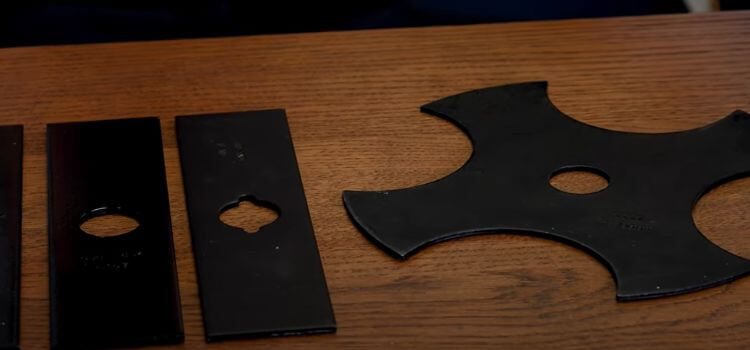
How To Sharpen An Edger Blade With A Bench Grinder
Maintaining a sharp edger blade ensures your lawn edges are crisp and clean. A bench grinder is a powerful tool for sharpening edger blades. It offers precision and efficiency. This guide will walk you through the steps to sharpen an edger blade with a bench grinder.
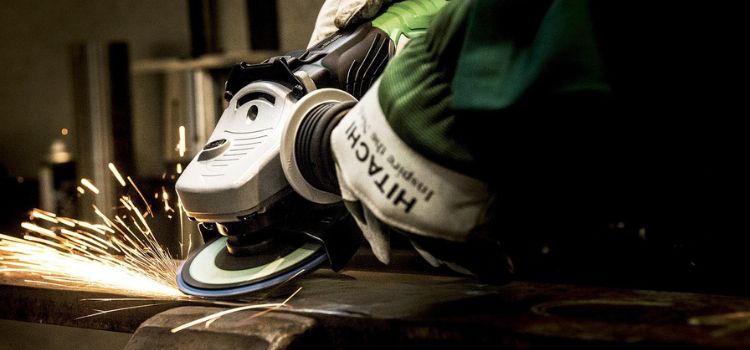
Securing The Blade
Before starting, ensure the blade is securely fastened. This prevents accidents and provides a smooth sharpening process.
To secure the blade:
- Remove the blade from the edger. Use a wrench or socket set.
- Clamp the blade in a vise. Ensure it’s stable and won’t move.
- Wear safety gear. Goggles and gloves are essential for protection.
Make sure the blade is at a comfortable height. This reduces strain on your back and allows for precise control.
Use a solid, stable workbench. A wobbly surface can lead to uneven sharpening.
Choosing The Correct Wheel
Selecting the right grinding wheel is crucial. It affects the sharpness and lifespan of the blade.
Consider these factors when choosing a wheel:
- Material: Most edger blades are steel. Use a grinding wheel designed for metal.
- Grit: A medium grit wheel (60-80) is ideal for sharpening.
- Size: Ensure the wheel fits your bench grinder. Standard sizes are 6-inch and 8-inch.
Check the wheel for cracks or damage. A damaged wheel can break during use, posing a safety risk.
Refer to the grinder’s manual. It may recommend specific wheel types and sizes.
Setting The Angle
The angle of sharpening is vital. It determines the blade’s cutting efficiency.
Follow these steps to set the angle:
- Identify the blade’s angle. This is the angled edge that does the cutting.
- Match the grinder’s tool rest. Adjust it to match the blade’s bevel angle. Most edger blades have a bevel angle between 30-45 degrees.
- Use a protractor. This tool helps ensure the angle is accurate.
Maintaining the correct angle ensures a sharp, efficient blade.
Sharpening The Blade
With the blade secured and the angle set, it’s time to sharpen.
Follow these steps for effective sharpening:
- Power on the grinder. Allow it to reach full speed.
- Gently press the blade against the grinding wheel. Move it back and forth across the wheel.
- Maintain the angle. Consistency is critical to a sharp edge.
- Check progress. After a few passes, inspect the blade. Ensure an even grind.
- Cool the blade. Dip it in water periodically to prevent overheating.
Sharpen both sides of the blade evenly. This ensures balanced cutting performance.
Checking The Blade
After sharpening, inspect the blade for sharpness and balance.
Perform these checks:
- Visual inspection: Look for a uniform, shiny edge. No nicks or uneven spots should be visible.
- Touch test: Carefully feel the edge with your finger. It should be smooth and sharp.
- Balance test: Hang the blade on a nail through its center hole. Ensure it hangs level. An unbalanced blade can cause vibrations during use.
If the blade passes these checks, reinstall it on the edger. If not, repeat the sharpening process.
Tip: Regularly sharpen your edger blade. This keeps your lawn looking neat and reduces wear on the edger.
How To Sharpen An Edger Blade With A File
Keeping your edger blade sharp ensures clean and precise cuts along your lawn’s edges. A dull blade can tear the grass, leaving a ragged edge and causing damage. Learning how to sharpen an edger blade with a file is a simple and cost-effective way to maintain your lawn tool. This step-by-step guide will help you achieve a sharp edge and a professional-looking lawn.

Securing The Blade
Before sharpening, you must secure the blade for safety and efficiency. Follow these steps to ensure the blade is firmly in place:
- Disconnect the edger from any power source to prevent accidental starts.
- Remove the blade from the edger. Consult your edger’s manual for specific instructions.
- Clean the blade thoroughly to remove dirt, grass, and debris.
- Use a bench vise or clamps to hold the blade securely. Place the blade in the vise with the cutting edge facing up.
Properly securing the blade ensures it remains stationary while you work, reducing the risk of injury. A clean and stable blade makes the sharpening process more effective.
Choosing The Correct File
Selecting the correct file is crucial for achieving a sharp edge. Consider the following:
- Use a mill file with a single-cut pattern for smooth sharpening.
- Choose a file with a medium or fine grit for best results.
- Ensure the file length is appropriate for the blade size. A 10-inch file is generally suitable for most edger blades.
Using the correct file type and size helps maintain control and precision. A mill file with a single-cut pattern is ideal for removing metal without creating deep scratches. The proper file ensures a smooth, sharp edge, enhancing the blade’s performance.
Setting The Angle
Setting the correct angle is essential for effective sharpening. Follow these steps:
- Identify the original bevel angle of the blade. This is usually around 30 degrees.
- Match the file angle to the blade’s bevel. Hold the file at the same angle to maintain consistency.
- Use a protractor or angle guide if needed to ensure accuracy.
Maintaining the original bevel angle ensures the blade cuts efficiently and evenly. An incorrect angle can result in a weaker edge and poor cutting performance. Consistency is critical to achieving a sharp, durable edge.
Sharpening The Blade
Sharpening the blade involves smooth, even strokes. Follow these steps:
- Hold the file firmly with both hands. One hand should be at the handle and the other at the tip for control.
- Apply consistent pressure as you push the file across the blade in a single direction, away from the edge.
- Use long, even strokes to cover the entire length of the blade.
- Check your progress frequently to ensure even sharpening.
Consistent pressure and even strokes are crucial for a smooth, sharp edge. Avoid using a back-and-forth motion, as this can create uneven surfaces. Regularly check your progress to ensure a uniform edge.
Checking The Blade
After sharpening, it’s essential to check the blade for sharpness and balance:
- Inspect the edge visually for smoothness and consistency.
- Test the sharpness by carefully running your finger across the edge (away from the cutting direction). It should feel sharp but smooth.
- Check the blade balance by placing it on a nail or screwdriver. It should remain level.
- Reattach the blade to the edger following the manufacturer’s instructions.
A well-sharpened blade will have a smooth, even edge and feel sharp. Balancing the blade ensures it operates efficiently without causing excessive vibration. Properly reattached, your edger is now ready for use, providing clean, precise cuts for a neat lawn.
How To Sharpen An Edger Blade With A Sharpening Stone
Keeping your edger blade sharp ensures precise cuts and extends the tool’s lifespan. Sharpening an edger blade with a sharpening stone is an effective method. This guide will help you through the steps to achieve a razor-sharp edge.
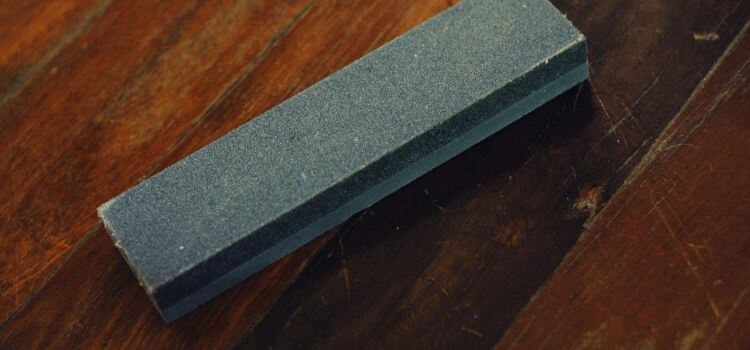
Securing The Blade
Before sharpening, ensure the edger blade is securely fastened. A loose blade can cause accidents and uneven sharpening.
Follow these steps to secure the blade:
- Disconnect the power source to prevent accidents.
- Use a wrench to remove the blade from the edger.
- Clean any dirt or grass from the blade.
- Place the blade in a vice grip. Ensure it is tightly secured.
Ensuring the blade is steady allows for more precise sharpening and reduces the risk of injury.
Choosing The Correct Stone
Selecting a suitable sharpening stone is crucial. Different stones suit different types of blades.
Here are some options:
| Stone Type | Best For |
|---|---|
| Oil Stone | General sharpening |
| Water Stone | Fine, precise edges |
| Diamond Stone | Harder, more durable blades |
Choose a stone that matches your blade’s material and desired sharpness.
Setting The Angle
The angle at which you sharpen the blade affects its performance.
To set the correct angle:
- Identify the blade’s bevel angle, usually between 30-45 degrees.
- Use a protractor to measure the existing angle.
- Adjust the blade in the vice grip to maintain this angle during sharpening.
Maintaining the correct angle ensures a sharp and efficient blade.
Sharpening The Blade
You can start sharpening once the blade is secure and the angle is set.
Follow these steps:
- Hold the sharpening stone firmly.
- Start at the base of the blade.
- Move the stone along the blade’s edge in a smooth, consistent motion.
- Apply light pressure to avoid removing too much material.
- Repeat this process until the edge is sharp.
Sharpen both sides of the blade evenly to maintain balance.
Checking The Blade
After sharpening, it’s essential to check the blade’s sharpness.
Here’s how:
- Run your finger gently along the edge. It should feel smooth and sharp.
- Inspect the blade visually for any uneven spots.
- Reattach the blade to the edger and test it on a small patch of grass.
- If the blade cuts cleanly, your sharpening is successful.
Regularly checking ensures your blade remains in top condition.
FAQ For How to Sharpen an Edger Blade
The best way to sharpen an edger blade is with a diamond file. Make sure to use a file with a nerve size appropriate for the type of metal your knife is made of.
You should sharpen your edger blade every few months or whenever you notice it isn’t performing as well as it used to.
Yes, you should use oil when sharpening your blade. It will help control the metal from overheating and keep your file clean.
If the blade is too dull to sharpen, you may need to replace it. You can buy a new knife from your local hardware store or online.
The best way to store your edger blade is in a dry, cool place. It would help if you also protected it from moisture and dirt.
Conclusion
Sharpening an edger blade is essential for a crisp, clean cut. Follow these steps to maintain your tool’s efficiency. Regular maintenance ensures longer blade life and better lawn edges. With the proper techniques, you can achieve professional results. Keep your edger in top shape for a beautifully manicured lawn.
Happy gardening!

